קומלינה , דמעות האלמנה
| Scientific name: | Commelina communis L. | |
| Common name: | Asiatic dayflower, Widow's Tears | |
| Hebrew name: | קומלינה, דמעות האלמנה | |
| Family: | Commelinaceae, קומליניים |
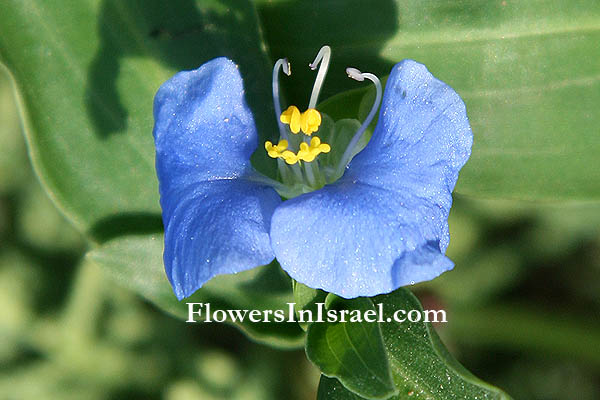
|
| Life form: | Herbaceous annual plant | |
| Stems: | Decumbent, glabrous basally, puberulent towards the extremities; diffusely branched | |
| Leaves: | Lanceolate, or lance-shaped, to ovate-elliptic, between egg-shaped and ellipse-shaped. | |
| Inflorescence: | Often bracted; many inflorescences; a single inflorescence usually has 4 flower buds per bract; single flower opens at sunrise each day and lasts until noon | |
| Flowers: | Actinomorphic; 3 petals, upper 2 petals round, bright blue; lower petal much smaller, white, notched into 3 rounded lobes; 3types of stamen: 2 long brown stamens, 1 medium-lenght yellow stamen, 3 short yellow stamens; | |
| Fruits / pods: | Capsule, dehiscent, 2-valved, ellipsoid with 2-locular; glabrous, brown; seeds brown, brownish-yellow; rugose pitted-reticulate | |
| Flowering Period: | July, August, September | |
| Habitat: | Cultivated Beds | |
| Origin: | E. Asia - S. China, Japan, India |
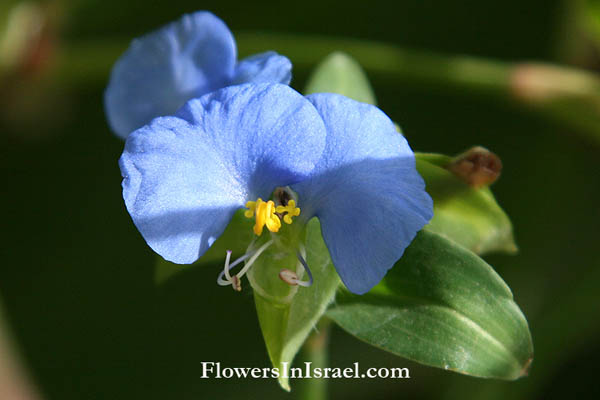
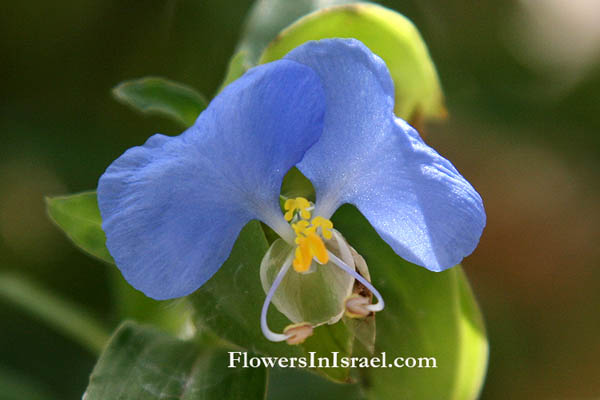
Derivation of the botanical name: Commelina, in honour of the Dutch botanists Jan (1629 – 1692) and Caspar Commelijn (1668 - 1731), using the two large showy petals of Commelina communis to symbolise them. communis, common.
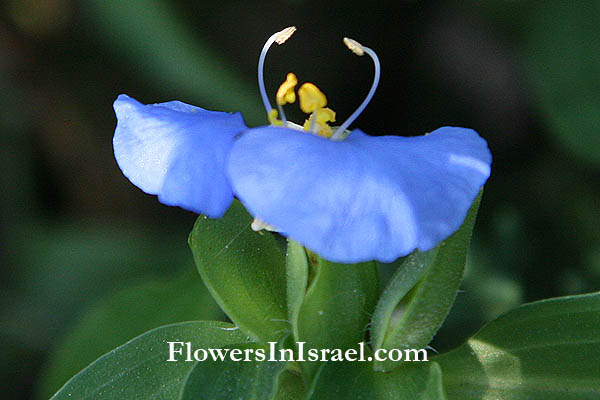
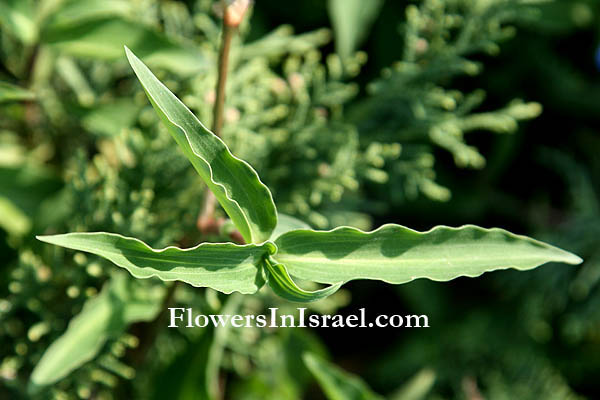
|